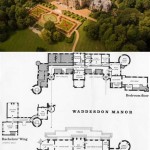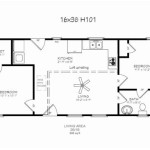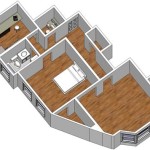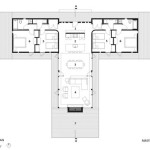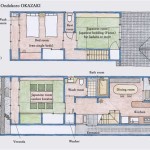How To Find Building Plans For Your House
Locating building plans for a house can be essential for various reasons, including renovations, extensions, understanding the structural integrity of the property, resolving boundary disputes, or simply gaining insights into the original design. The process can sometimes be straightforward, while in other cases, it might require persistence and multiple avenues of investigation. This article outlines a comprehensive guide to locating building plans, covering various sources and strategies.
Initial Steps: Gathering Information and Establishing a Timeline
Before embarking on the search for building plans, it is crucial to gather as much information about the house as possible. This information acts as a key to unlocking potential sources and streamlining the search process. Essential details include the full street address, the approximate construction year, any previous owners' names (if available), and any known alterations or additions to the property. The construction year is particularly important as it dictates which building codes and regulations were in effect at the time, potentially influencing where the plans were filed.
Establishing a timeline of ownership for the house is likewise beneficial. Knowing the names of previous owners can assist in searching through historical records and previous planning applications. Online property databases, historical societies, and local libraries can be vital in piecing together the ownership history of the property.
Furthermore, investigating local history can yield valuable clues. Local historical societies often maintain archives of building permits, maps, and other relevant documents from different eras. Even anecdotal information about the house's construction or any significant modifications can point to potential sources for the building plans.
Exploring Municipal and Government Archives
The primary source for building plans is typically the local municipal or government archive. Building departments or planning departments are responsible for reviewing and approving building plans before construction commences. Therefore, they are likely custodians of the approved architectural drawings that were submitted for permitting.
The process for accessing these records varies depending on the jurisdiction. In many cases, a written request must be submitted to the relevant department. This request should include as much detailed information about the property as possible, including the address, construction year, and any available permit numbers. Some municipalities may also require proof of ownership, such as a property deed or recent tax bill, to ensure that only authorized individuals can access the records.
Increasingly, municipalities are digitizing their records and making them available online. This allows for convenient access to building plans from the comfort of one's home. However, the extent of digitization varies, and older records may still be stored in physical archives. Websites of local government agencies, planning departments and city halls should be consulted systematically.
When searching digital archives, it is important to try various search terms, including the street address, lot number, and previous owners' names. Some systems may have limitations in their search capabilities, so experimenting with different keywords can improve the chances of finding the desired plans.
If the plans are not available online, a visit to the municipal archive might be necessary. Staff members can assist in navigating the physical records and locating relevant documents. It is advisable to call ahead to schedule an appointment and inquire about any specific procedures or fees associated with accessing the records. The type of information available and the complexity of the process can vary greatly depending on the size of the municipality and the record-keeping practices in place at the time the house was built.
In cases where a building permit was never formally obtained for the original construction or for subsequent modifications, plans may not be readily available in the municipal archives. This is more likely to occur with older properties or in areas with less stringent building regulations in the past. If this is suspected, alternative sources must be explored.
Consulting with Professionals: Architects, Builders, and Title Companies
Another avenue for locating building plans is to consult with professionals who may have been involved in the house's design or construction. Contacting local architects or builders who have a long-standing presence in the area can prove fruitful. They may have records of past projects, including plans for houses in the neighborhood. Even if they do not have the exact plans, they might be able to provide valuable insights into the house's construction or refer to other potential sources.
Title companies can sometimes possess records related to the property, including surveys, easements, and other documents that may contain information about the house's layout and dimensions. While they may not have complete building plans, these records can provide valuable supplementary information.
Moreover, contacting previous owners of the house can be a valuable strategy. They might have retained copies of the building plans from when they purchased the property or from any renovations they undertook. Reaching out to them through social media, online property records, or neighborhood associations can be a worthwhile endeavor.
When communicating with professionals or previous owners, it is important to be polite and respectful of their time. Clearly explain the reason for the inquiry and the specific information being sought. Providing as much detail as possible about the property can help them quickly assess whether they have relevant records or knowledge.
Exploring Alternative Sources: Insurance Companies, Libraries and Historical Societies
In cases where the conventional sources have been exhausted, exploring alternative avenues for locating building plans may be necessary. Insurance companies, for instance, often require building plans for valuation or risk assessment purposes. If the house has been insured for a significant period, the insurance company might have a copy of the plans on file. Contacting the current or previous insurance providers can be a valuable step.
Local libraries and historical societies can be valuable resources for historical documents, maps, and photographs related to the area. These resources may contain information about the house's construction or design, even if they do not possess the complete building plans. Searching through local history collections and archives can uncover unexpected details.
Online mapping services and aerial photographs can also provide insights into the house's layout and dimensions. While these sources do not provide detailed construction plans, they can be helpful in understanding the overall structure and any additions or modifications that have been made over time. Websites like Google Earth and historical aerial photography databases can be valuable tools.
In some cases, neighbors may have knowledge of the house's history or construction. Engaging with the local community and seeking information from long-time residents can lead to valuable clues. They might be able to provide insights into who built the house, when it was constructed, or any significant alterations that have been made.
If the house is part of a planned community or homeowners association, the association might have records of the original building plans or any subsequent modifications that were approved. Contacting the homeowners association and inquiring about their archives can be a worthwhile step.
It's important to remember that even if the original building plans cannot be located, a professional architect or engineer can create a new set of "as-built" drawings by examining the current structure and taking detailed measurements. These drawings can serve as a substitute for the original plans and can be used for renovation or planning purposes.

How To Find Building Plans For My House Architecture Design Plan

9 Ways To Find Floor Plans Of An Existing House Blueprints Archid

How To Get Blueprints Of Your House

Where You Can Buy House Plans Live Home 3d

Floor Plans Learn How To Design And Plan

9 Ways To Find Floor Plans Of An Existing House Blueprints Archid

How To Read A Floor Plan With Dimensions Houseplans Blog Com

Building Your Dream Home How To Find The Right Floor Plan For You

House Plans How To Design Your Home Plan

Easy Home Building Floor Plan Cad Pro
Related Posts

